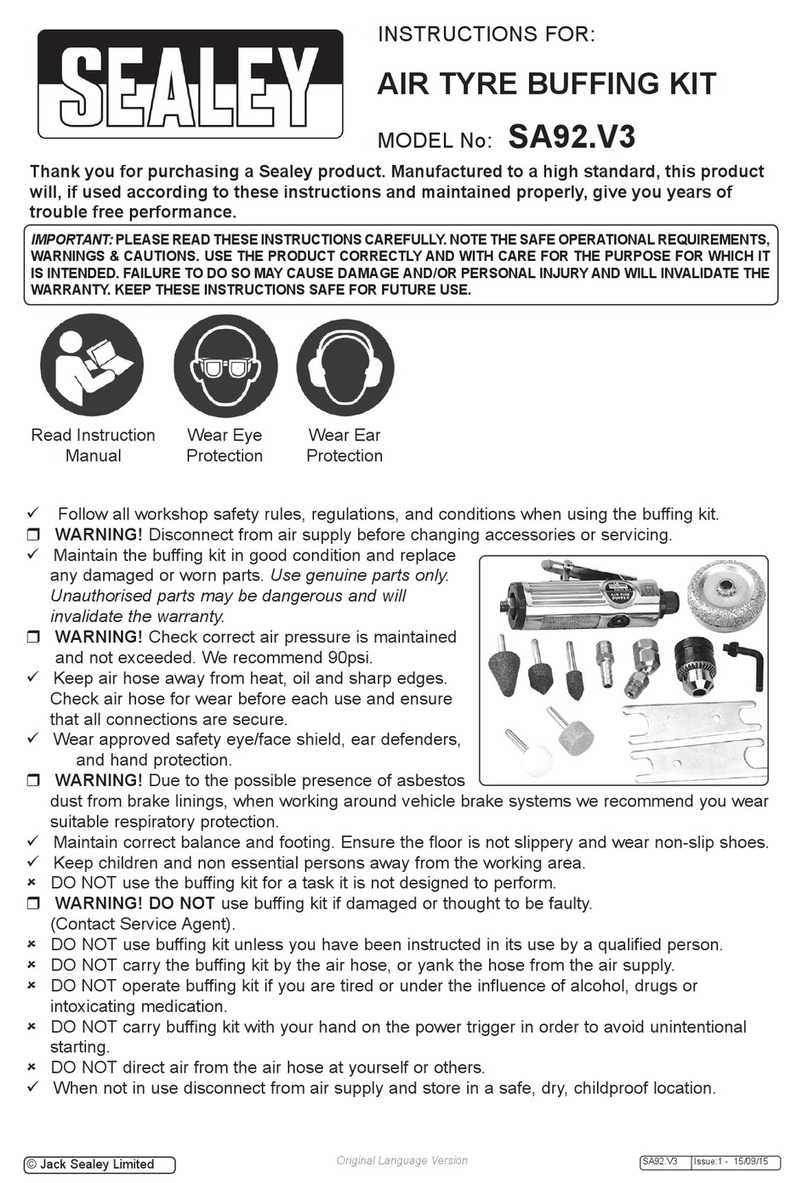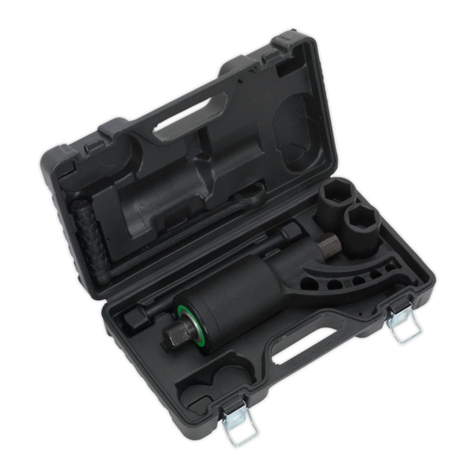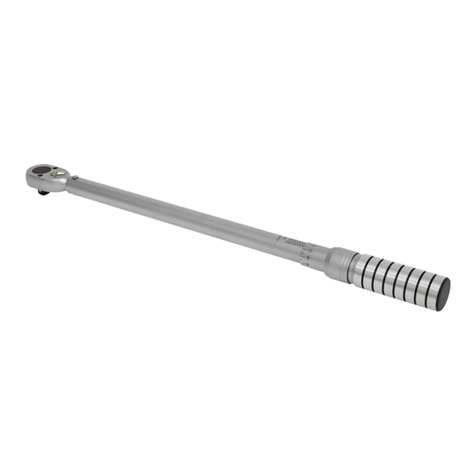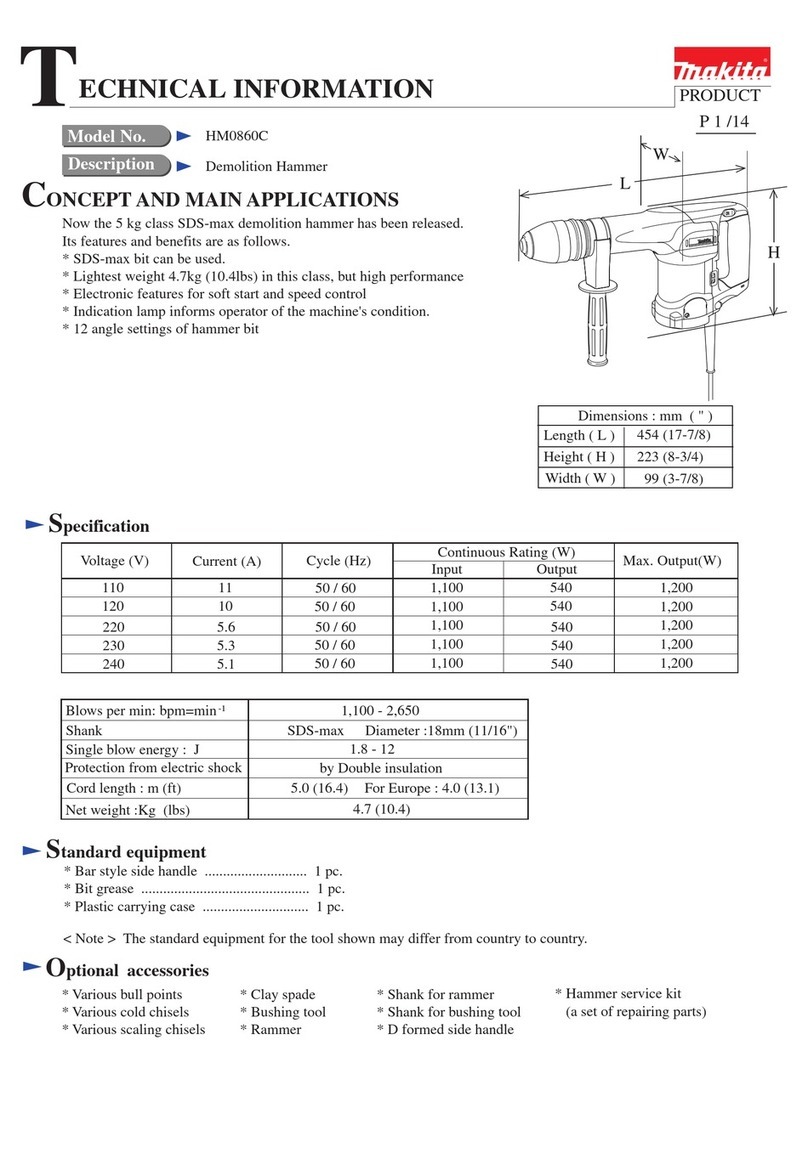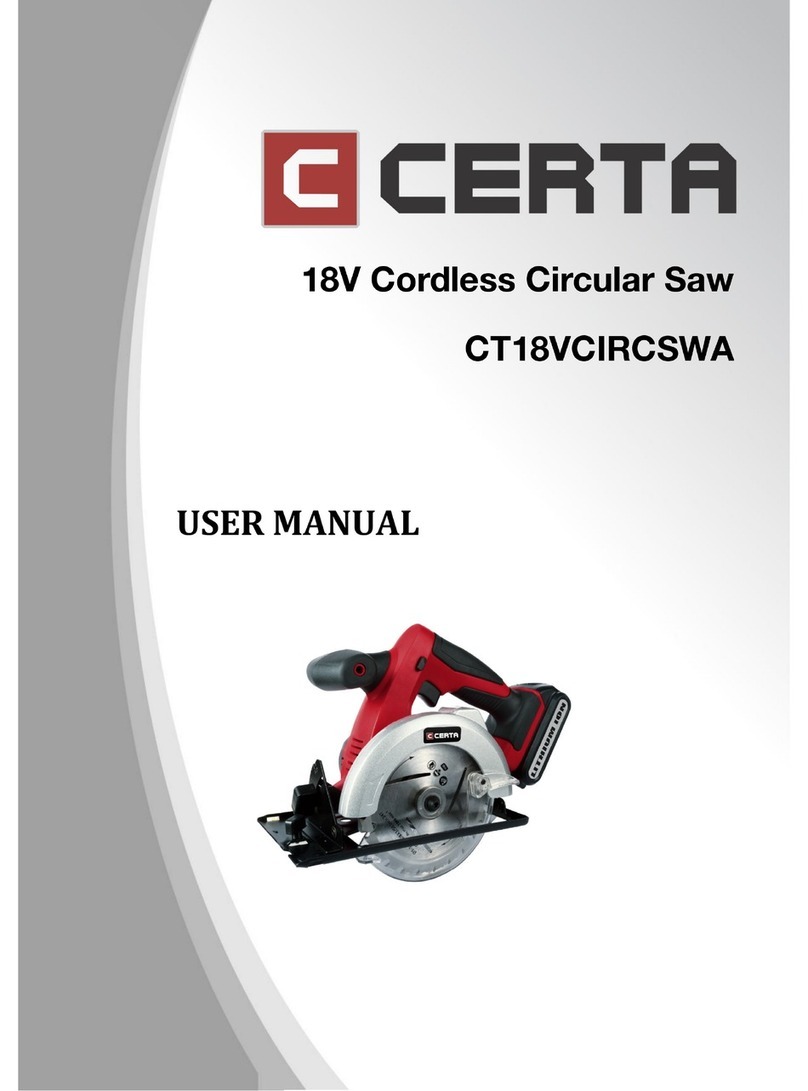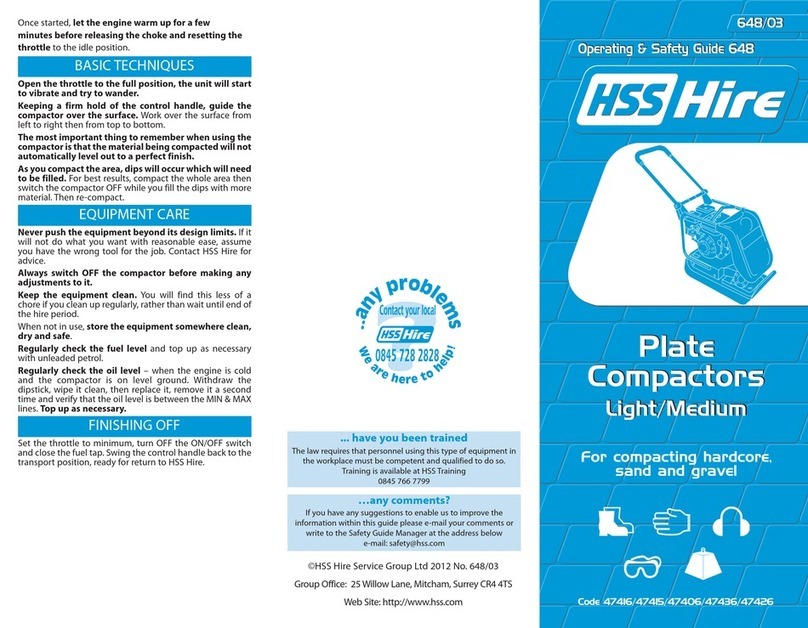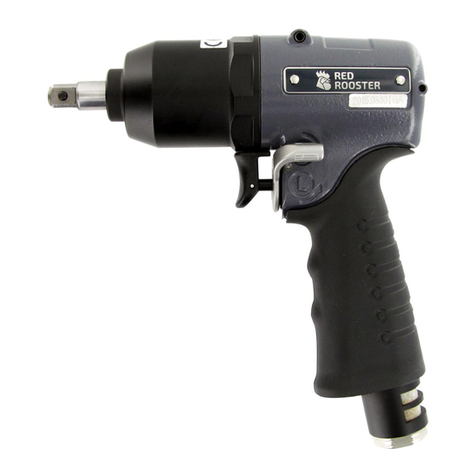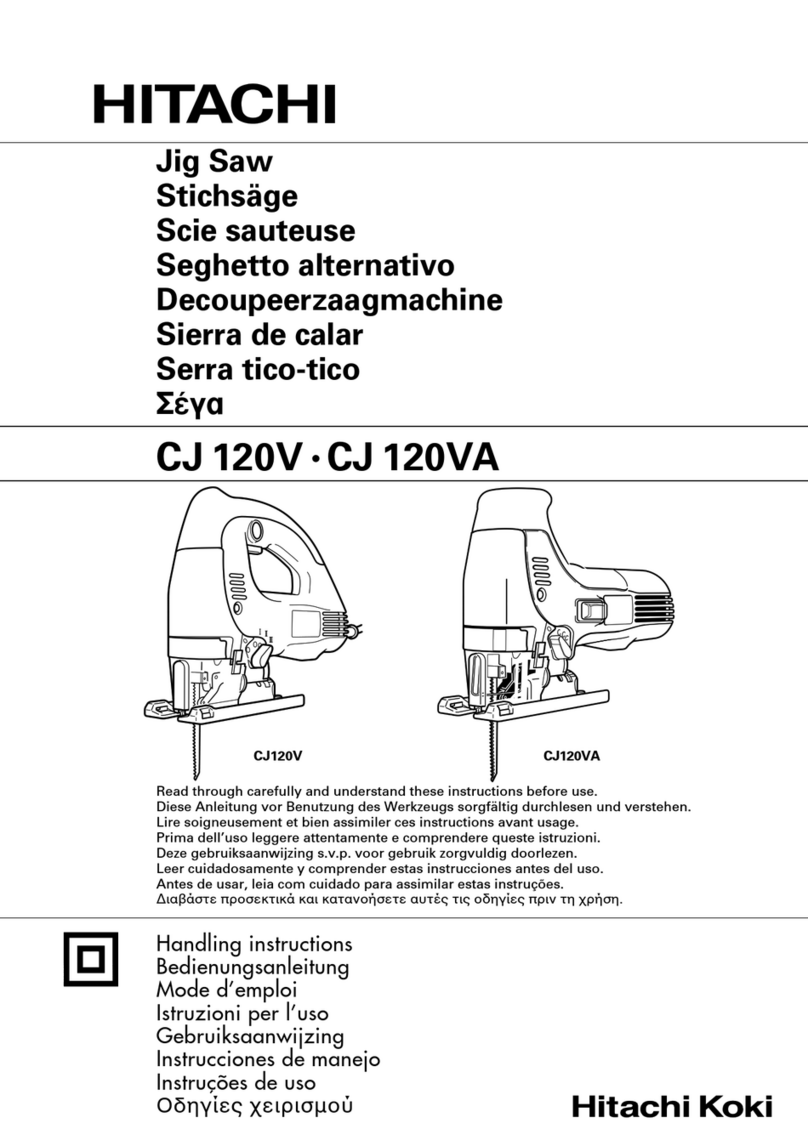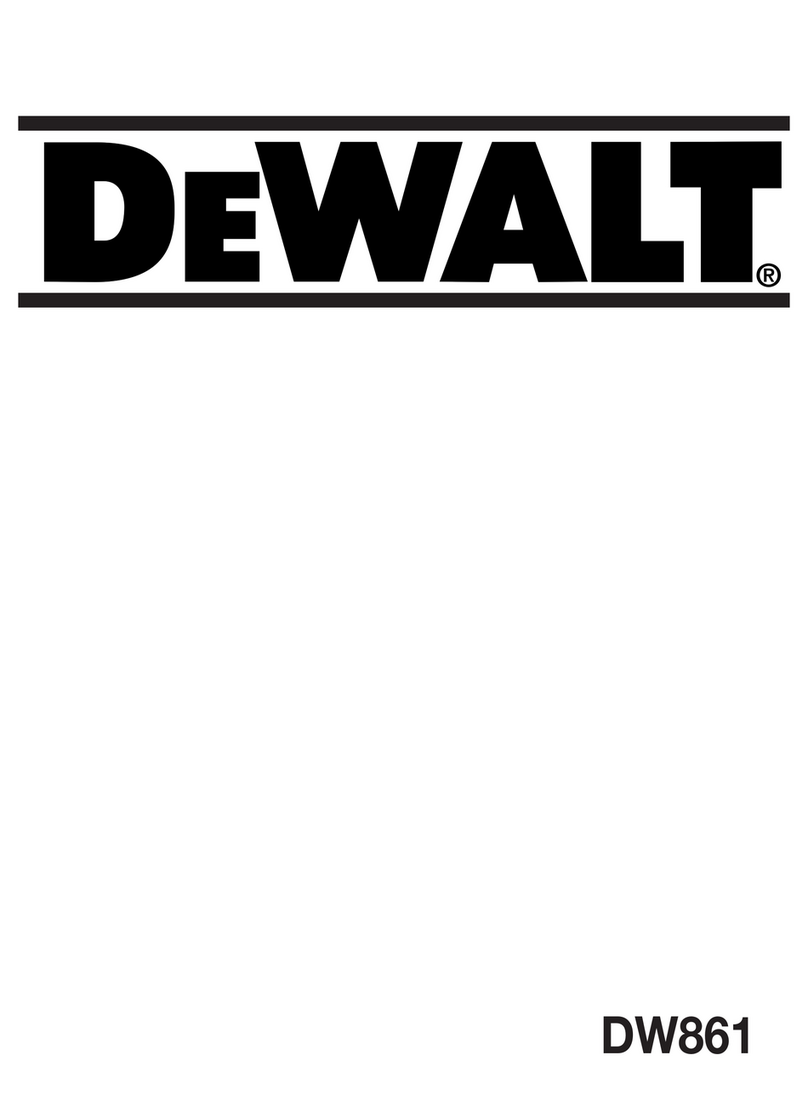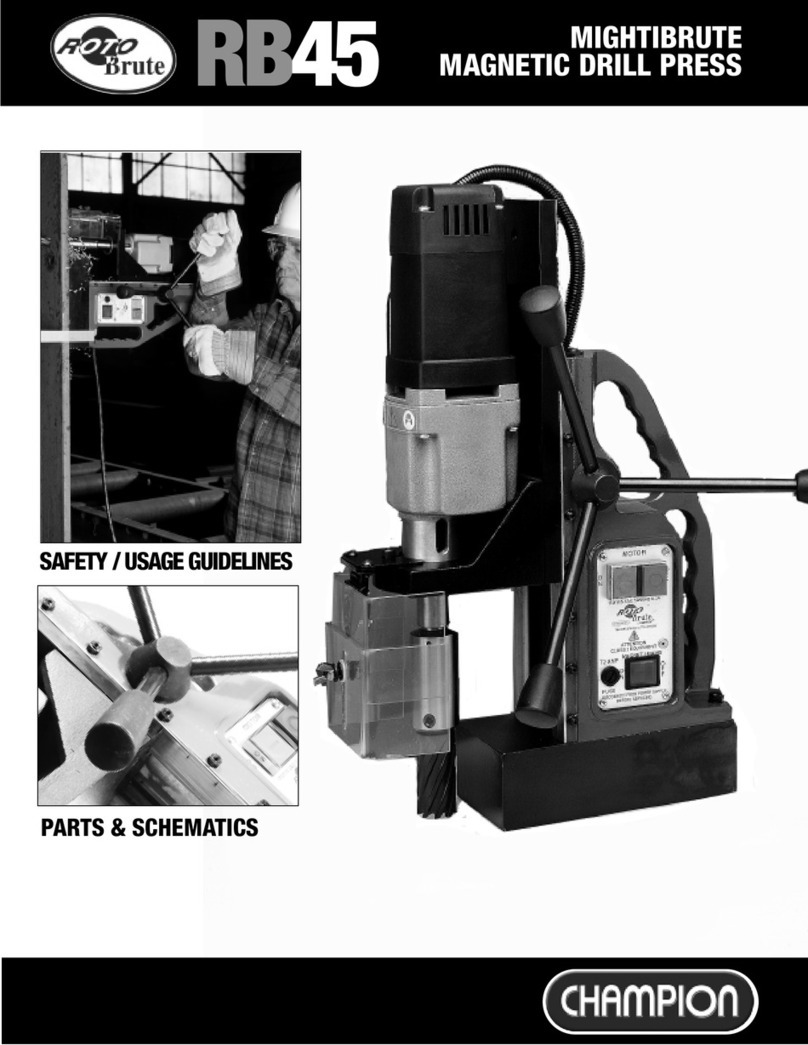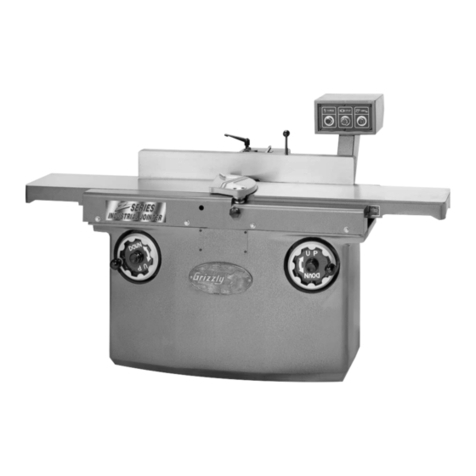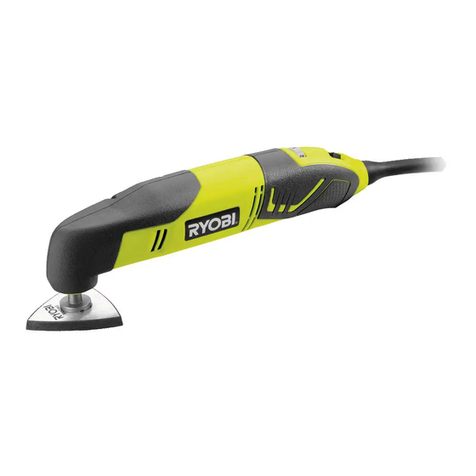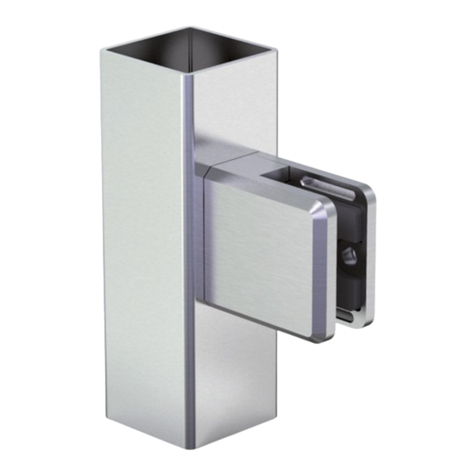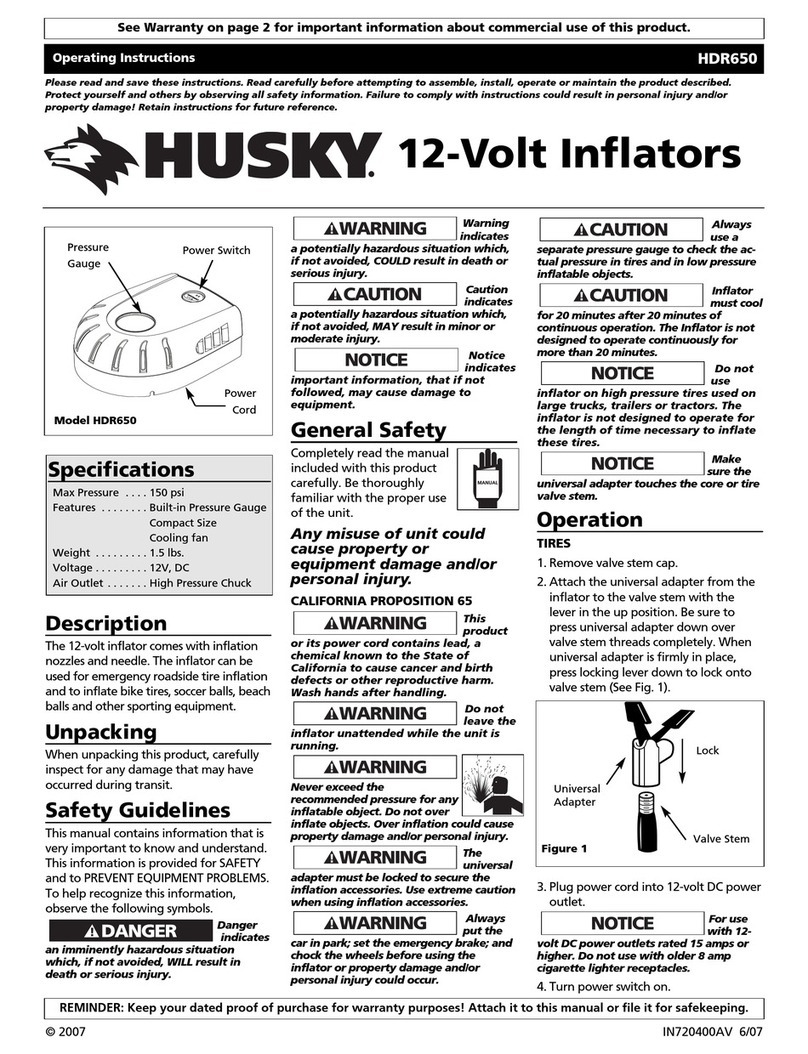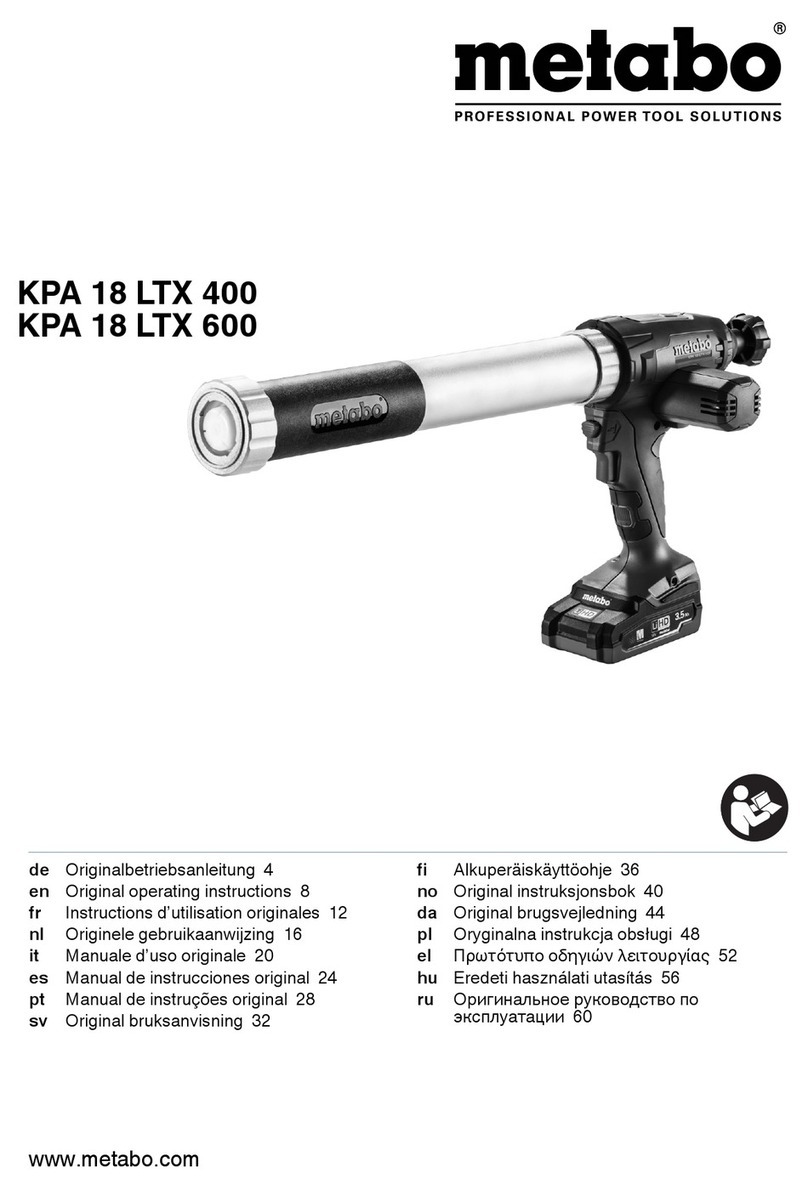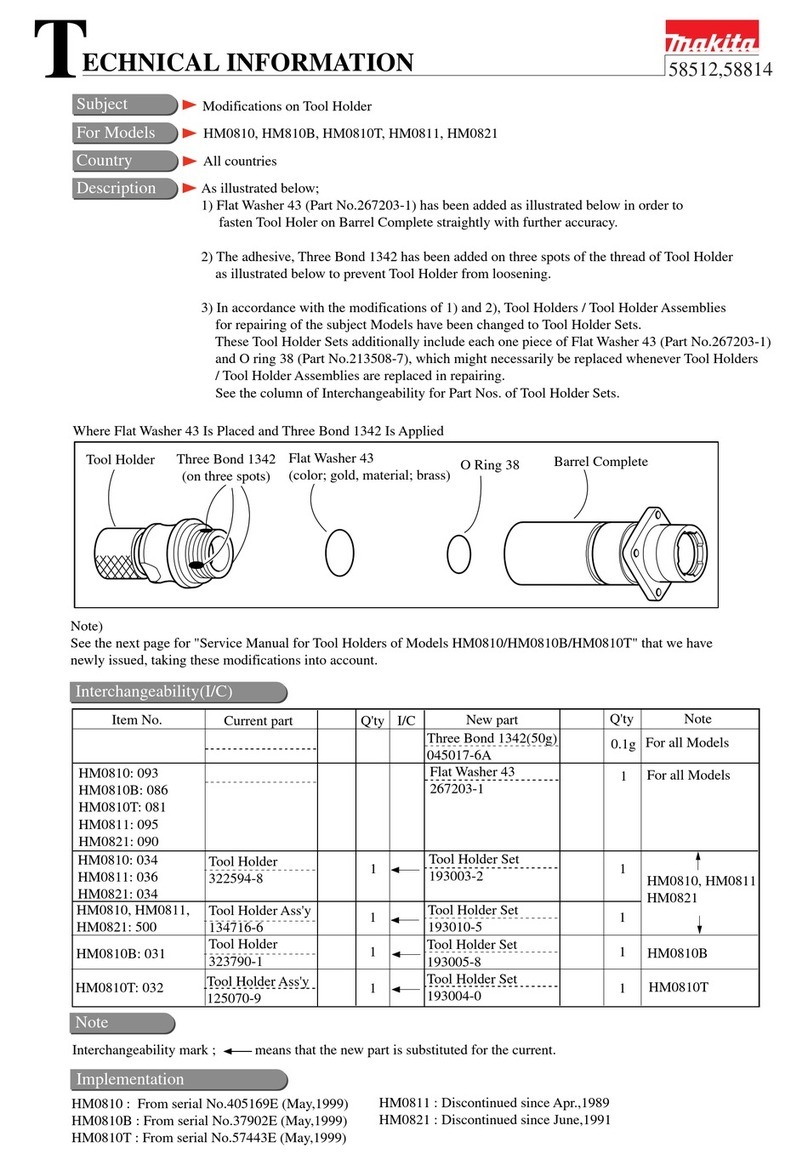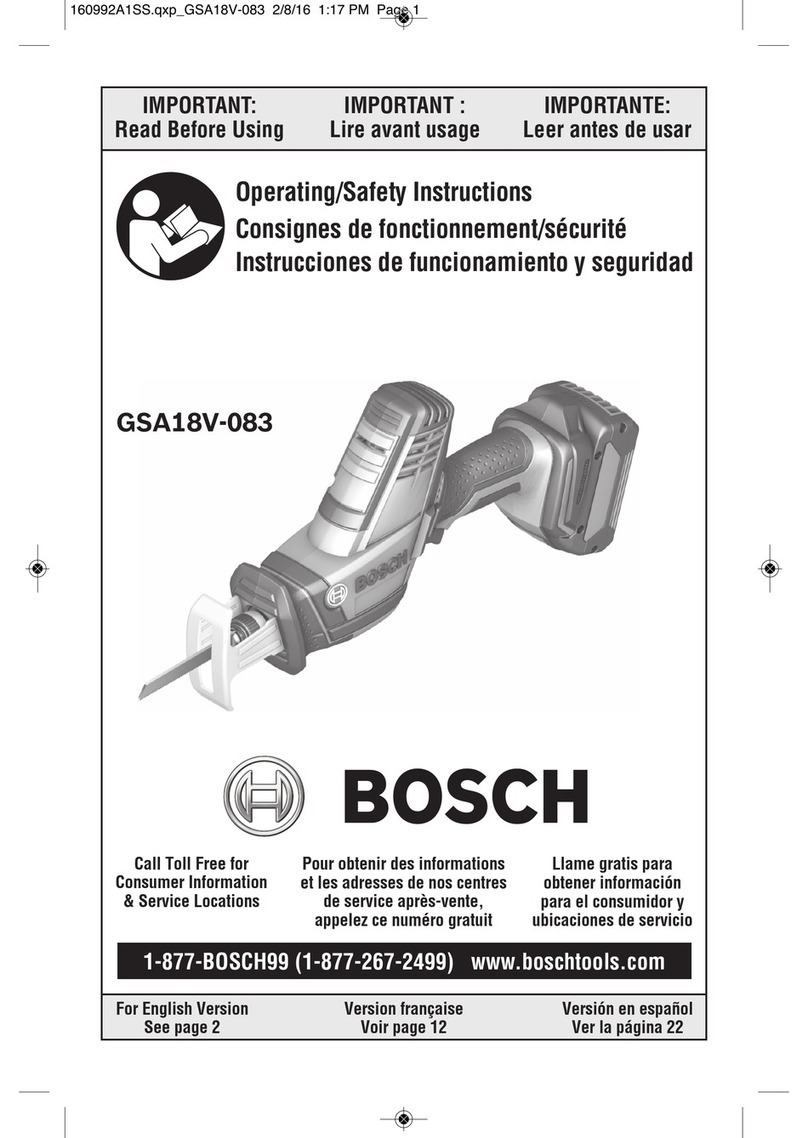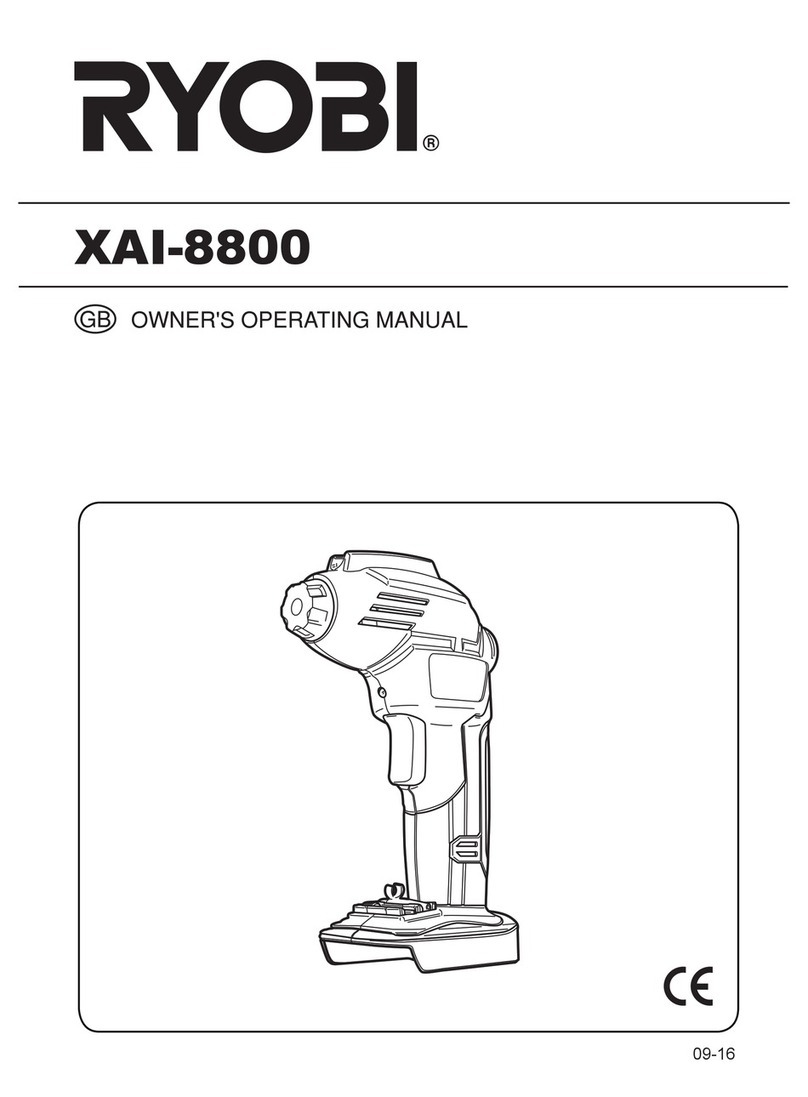Sealey CP1440MH User manual

1.1 GENERAL SAFETY
Follow all workshop safety rules, regulations and conditions when using the wrench.
Remove the battery pack from the wrench before servicing or performing any maintenance.
Maintain the wrench and battery pack in good condition. Check moving parts for alignment on a regular basis.
Replace or repair damaged parts. Use an authorised service agent and recommended parts only. Unauthorised parts may be dangerous
and will invalidate the warranty.
Ensure the wrench is ‘locked’ before installing the battery pack.
Keep the wrench, battery pack and charger clean for optimum performance.
Keep the work area clean and tidy and free from unrelated materials. Ensure that there is adequate lighting.
Ensure that battery pack is correctly inserted into the wrench handle and latched in place before operating wrench.
WARNING! When working around vehicle brake systems we recommend that you wear suitable respiratory protection due to the possible
presence of asbestos dust from brake linings.
Use only impact sockets which are specifically designed for use with an impact wrench.
Avoid unintentional starting.
Wear approved safety eye/face shield, ear defenders and hand protection.
Remove ill-fitting clothing. Remove ties, watches, rings and other loose jewellery and contain long hair.
Maintain correct balance and footing. Ensure the floor is not slippery and wear non-slip shoes.
Keep children and unauthorised persons away from the work area.
DO NOT operate the wrench if any parts are missing as this may cause failure and/or personal injury.
DO NOT use the wrench unless you have been instructed in its use by a qualified person.
DO NOT operate the wrench where there are solvent fumes or flammable gases, liquids or solids.
DO NOT leave the wrench operating unattended.
DO NOT carry wrench with your finger on the trigger. Keep direction switch in ‘locked’ position when not in use.
DO NOT use the wrench for a task it is not designed to perform.
DO NOT operate the wrench when you are tired or under the influence of alcohol, drugs or intoxicating medication.
DO NOT get the wrench or battery charger wet or use in damp or wet locations.
Keep wrench and charger in the case and store in a safe, dry, childproof area where the temperature will not exceed 40°C (104°F).
1.2 BATTERY SAFETY INSTRUCTIONS
Charge the battery pack prior to first use. The battery pack will have been shipped in a low charge state.
Use only the charger provided to charge the battery pack.
DO NOT charge the battery pack when room temperature is below 10°C (50°F) or above 40°C (104°F).
DO NOT attempt recharging the pack by means of an engine generator or a DC power source.
DO NOT short-circuit the battery pack by touching both terminals at the same time with a metal object, or your fingers etc.
DO NOT store battery pack (or wrench) in locations where the temperature may exceed 40°C (104°F) e.g. in outside sheds, above
heaters etc.
1.3 MAINS POWER ELECTRICAL SAFETY (In relation to the battery charger)
WARNING! It is the responsibility of the owner and the operator to read, understand and comply with the following:
You must check all electrical products, before use, to ensure that they are safe. You must inspect power cables, plugs, sockets and any
other connectors for wear or damage. You must ensure the risk of electric shock is minimised by the installation of appropriate safety
devices. A Residual Current Circuit Breaker (RCCB) should be incorporated in the main distribution board. We also recommend that a
Residual Current Device (RCD) be used. It is particularly important to use an RCD with portable products that are plugged into a supply
that is not protected by an RCCB. If in any doubt consult a qualified electrician. You may obtain a Residual Current Device by contacting
your Sealey dealer. You must also read and understand the following instructions concerning electrical safety.
1.3.1 The Electricity At Work Act 1989 requires all portable electrical appliances, if used on business premises, to be tested by a qualified
electrician, using a Portable Appliance Tester (PAT), at least once a year.
1.3.2 The Health & Safety at Work Act 1974 makes owners of electrical appliances responsible for the safe condition of those appliances
and the safety of the appliance operator. If in any doubt about electrical safety, contact a qualified electrician.
1. SAFETY
Thank you for purchasing a Sealey product. Manufactured to a high standard this product will, if used according to these instructions and
properly maintained, give you years of trouble free performance.
IMPORTANT: PLEASE READ THESE INSTRUCTIONS CAREFULLY. NOTE THE SAFE OPERATIONAL REQUIREMENTS, WARNINGS, AND
CAUTIONS. USE THIS PRODUCT CORRECTLY, AND WITH CARE FOR THE PURPOSE FOR WHICH IT IS INTENDED. FAILURE TO DO SO
MAY CAUSE DAMAGE AND/OR PERSONAL INJURY AND WILL INVALIDATE THE WARRANTY.
INSTRUCTIONS FOR:
CORDLESS IMPACT WRENCH 14.4V 2Ah
Ni-MH 3/8’’ SQ DRIVE 150LB.FT
MODEL NO: CP1440MH
Refer to
Instructions
Wear Ear
Protection
Wear Eye
Protection
1. SAFETY
Original Language Version CP1440MH Issue:1 - 03/07/17
© Jack Sealey Limited

2. INTRODUCTION & SPECIFICATION
3. OPERATION
fig.1
Powerful, compact, cordless impact wrench with electronic variable speed trigger. Forward, reverse and trigger lock control integrated into
housing for ease of use. Suitable for workshop applications with no trailing cables, causing hazards. Includes 14.4V 2Ah Ni-MH battery pack
and 80 minutes mains charger.
Drive: ................................................................................3/8” Square
No-Load Speed:........................................................................ 0-2200rpm
Impact Rate: ..........................................................................0-2900bpm
Maximum Torque: ..................................................................203Nm(150lb.ft)
Weight:....................................................................................1.8kg
Battery Pack: .....................................................................14.4V 2Ah Ni-MH
Noise Power ............................................................................. 99dB.A
Noise Pressure ........................................................................... 88dB.A
IMPORTANT WARRANTY INFORMATION:
The battery pack fitted to this cordless tool is considered to be a consumable item
and its ability to accept charge will reduce over time. We will provide warranty
against mechanical and electrical defect for a period of one year - this does not
cover fair wear and tear. If the battery is not properly charged before first use, or
regularly conditioned, its capacity will diminish. Under these circumstances we will
not replace the battery pack even if it is less than one year old.
3.1 CHARGING THE BATTERY PACK
3.1.1.
Remove the battery pack (fig.1.4) from the wrench, by depressing the two side
release clips (fig.1.3).
WARNING! Do not touch metal terminals.
3.1.2. Place wrench in carry case and remove the battery charger.
3.1.3. The battery pack and charger’s positive (+) and negative (-) terminals are
marked. Align the terminals correctly and insert the battery into slot (fig.2).
Note: The battery pack is designed so that it will only enter the charger correctly.
When placed in the charger, a very slight downward pressure will seat the pack
firmly into the power terminals.
3.1.4. Switch on main supply to charger and the green LED (fig.2) will light.
3.1.5. When the battery is inserted into the charger, the green LED will remain on and the
red will flash.
1.3.3 Ensure that the insulation on all cables and on the appliance is safe before connecting it to the power supply. See 1.3.1 and 1.3.2
and use a Portable Appliance Tester.
1.3.4 Ensure that cables are always protected against short circuit and overload.
1.3.5 Regularly inspect power supply cables and plugs for wear or damage and check all connections to ensure none is loose.
1.3.6 Important: Ensure that the voltage marked on the appliance matches the power supply to be used and that the plug is fitted with the
correct fuse - see fuse rating at 1.3.9.
1.3.7 DO NOT pull or carry the appliance by the power cable.
1.3.8 DO NOT pull the plug from the socket by the cable.
1.3.9 DO NOT use worn or damage cables, plugs or connectors. Immediately have any faulty item
repaired or replaced by a qualified electrician. When an ASTA/BS approved UK 3 pin plug is
damaged, cut the cable just above the plug and dispose of the plug safely.
Ensure that the double insulated charger is correctly connected via a three-pin plug, as follows:
a) Connect the Brown live wire to live terminal ‘L’.
b) Connect the Blue neutral wire to the neutral terminal ‘N’.
c) After wiring, check that there are no bare wires, that all wires have been correctly connected,
that the cable outer insulation extends past the cable clamp and that the clamp is tight.
Note that the earth pin ‘E’ remains unconnected.
1.3.10 If an extension reel is used it should be fully unwound before connection. A reel with an RCD
fitted ispreferred since any appliance plugged into it will be protected. The cable core section is
important and should be at least 1.5mm², but to be absolutely sure that the capacity of the
reel is suitable for this product and for others which may be used in the other output sockets,
we recommend the use of 2.5mm² section cable. If extension reel is to be used outdoors,
ensure itis marked for outdoor use.
1.4 BATTERY CHARGER SAFETY INSTRUCTIONS
WARNING! DO NOT attempt to charge any battery other than that supplied for the wrench. Other types of batteries may
explode!
All mains electrical supply safety features must be followed as described in 1.3 above.
Disconnect the charger from the mains supply when not in use.
DO NOT charge battery if room temperature is below 10°C (50°F) or above 40°C (104°F).
DO NOT expose the charger to damp or wet conditions.
DO NOT pull or carry the charger by the power lead.
DO NOT operate the charger if it has been dropped, or has received a sharp knock, or is damaged. Take the charger to an authorised
agent for repair or obtain a replacement.
DO NOT dismantle the charger as this may cause damage and/or personal injury and will invalidate the warranty.
DO NOT insert foreign objects or material into the hole reserved for the battery pack.
DO NOT recharge a second battery pack immediately after charging the first. Consecutive charging will overheat the charger. Allow the
unit to cool for 15 minutes before charging the next pack.
DO NOT attempt to connect two chargers together.
Store the charger in the same manner as the battery pack in 1.2.
Recommended Fuse
Rating: 5A
Original Language Version CP1440MH Issue:1 - 03/07/17
© Jack Sealey Limited

4. MAINTENANCE
4.1 CLEANING
Keep the outer case of the wrench clean and free from grease. DO NOT wash with water or use solvents or abrasives. Use a slightly
dampened cloth. For any other service or maintenance, contact your authorised service agent.
WARNING! Ensure you read, understand and apply safety instructions before use.
3.2 USING THE WRENCH
3.2.1 Use only impact sockets which are specifically designed for use with an impact wrench. The use of normal chrome vanadium sockets
is dangerous since these are more brittle and are liable to shatter.
3.2.2 Fit the socket to the wrench by snapping it onto the square drive (fig 1.1).
3.2.3 Fit the battery pack to the wrench by aligning the tongue on the battery with the groove in the housing and slide into place. Ensure
that the battery pack is firmly located, you will hear an audible click when it has locked into position.
3.2.4 Select the required direction of rotation. To change direction, push switch (fig.1.2) to the left or right. Familiarise yourself with this
operation before use. DO NOT attempt to change the direction of rotation whilst trigger (fig.1.5) is depressed.
When the wrench is not in use, use the same switch to lock off the trigger by placing the switch in the middle position.
3.2.5 When tightening, release the trigger as soon as the impact sound is heard. Take care not to over-torque small fixings.
Note: Speed of wrench is controlled by trigger depression.
Note: On critical fixings always check the torque with a torque wrench according to the product or vehicle manufacturer’s
guidelines.
3.1.6. When the charge is complete the red LED and the green LED will show a steady
light to indicate charging is complete. The battery pack is now ready for use.
Note: The first charge and several subsequent charges will take longer than usual until
the battery reaches optimum performance, after that the usual charge time will take
approximately 80 minutes.
3.1.7. After removing the battery, disconnect the charger from the mains supply and
store in the carry case.
g.2
Sealey Group, Kempson Way, Suffolk Business Park, Bury St Edmunds, Suffolk. IP32 7AR
01284 757500 01284 703534 sales@sealey.co.uk www.sealey.co.uk
Note: It is our policy to continually improve products and as such we reserve the right to alter data, specifications and component parts without
prior notice.
Important: No Liability is accepted for incorrect use of this product.
Warranty: Guarantee is 12 months from purchase date, proof of which is required for any claim.
BATTERY REMOVAL
Under the Waste Batteries and Accumulators Regulations 2009, Jack Sealey Ltd are required to inform potential purchasers of
products containing batteries (as defined within these regulations), that they are registered with Valpak’s registered compliance
scheme.
Jack Sealey Ltd Batteries Producer Registration Number (BPRN) is BPRN00705.
WEEE REGULATIONS
Dispose of this product at the end of its working life in compliance with the EU Directive on Waste Electrical and Electronic Equipment
(WEEE). When the product is no longer required, it must be disposed of in an environmentally protective way. Contact your local solid
waste authority for recycling information.
Original Language Version CP1440MH Issue:1 - 03/07/17
© Jack Sealey Limited

WARNING! – Risk of Hand Arm Vibration Injury.
This tool may cause Hand Arm Vibration Syndrome if its use is not managed adequately.
This tool is subject to the vibration testing section of the Machinery Directive 2006/42/EC.
This tool is to be operated in accordance with these instructions.
Measured vibration emission value (a): .........13.48m/s²
Uncertainty value (k):...........................1.5m/s²
Please note that the application of the tool to a sole specialist task may produce a different average vibration emission. We recommend that a
specific evaluation of the vibration emission is conducted prior to commencing with a specialist task.
A health and safety assessment by the user (or employer) will need to be carried out to determine the suitable duration of use for each tool.
NB: Stated Vibration Emission values are type-test values and are intended to be typical.
Whilst in use, the actual value will vary considerably from and depend on many factors.
Such factors include; the operator, the task and the inserted tool or consumable.
NB: ensure that the length of leader hoses is sufficient to allow unrestricted use, as this also helps to reduce vibration.
The state of maintenance of the tool itself is also an important factor, a poorly maintained tool will also increase the risk of Hand Arm Vibration
Syndrome.
Health surveillance.
We recommend a programme of health surveillance to detect early symptoms of vibration injury so that management procedures can be
modified accordingly.
Personal protective equipment.
We are not aware of any personal protective equipment (PPE) that provides protection against vibration injury that may result from the
uncontrolled use of this tool. We recommend a sufficient supply of clothing (including gloves) to enable the operator to remain warm and dry
and maintain good blood circulation in fingers etc. Please note that the most effective protection is prevention, please refer to the Correct Use
and Maintenance section in these instructions. Guidance relating to the management of hand arm vibration can be found on the HSE website
www.hse.gov.uk - Hand-Arm Vibration at Work.
Table of contents
Other Sealey Power Tools manuals
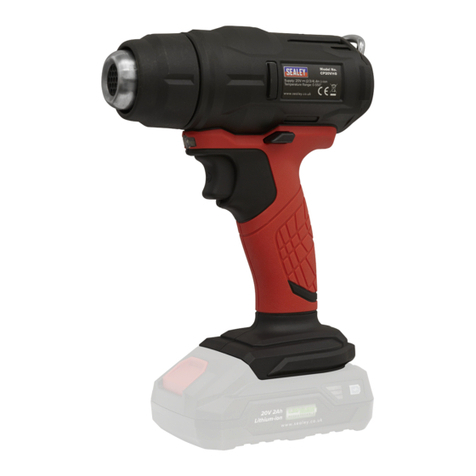
Sealey
Sealey CP20VHG User manual
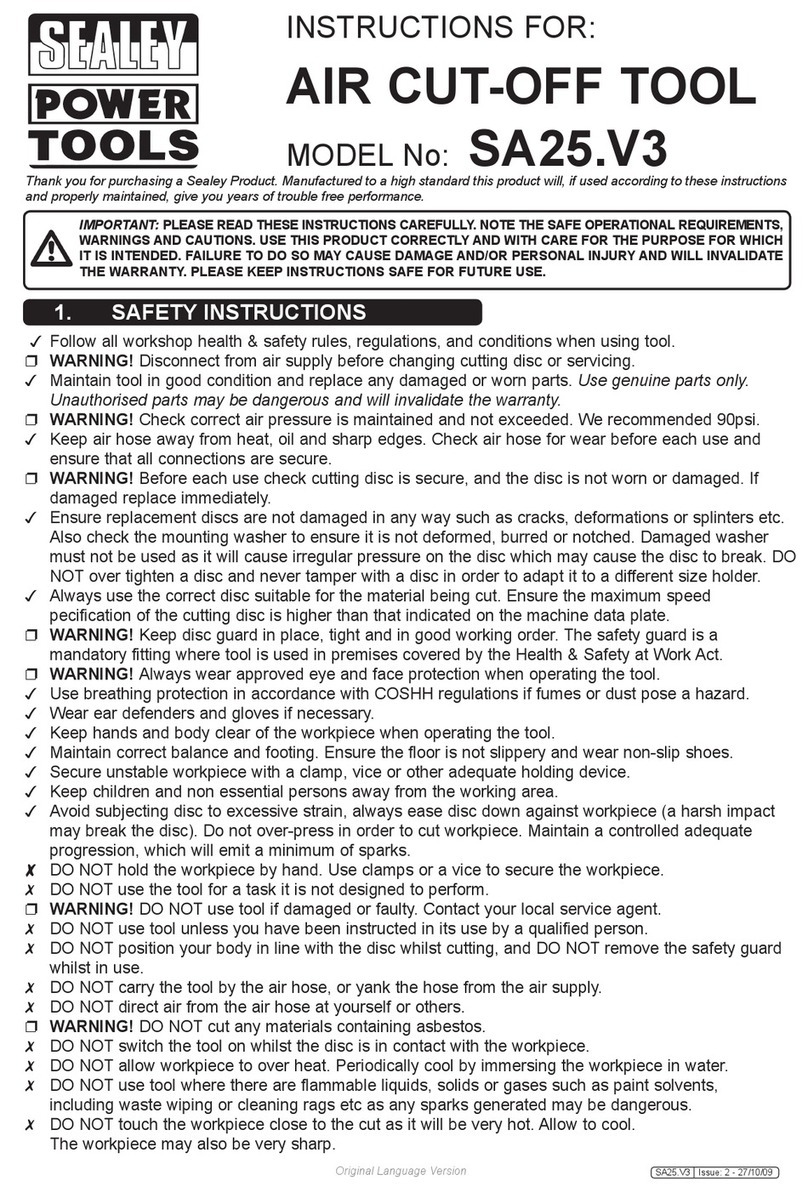
Sealey
Sealey SA25.V3 User manual
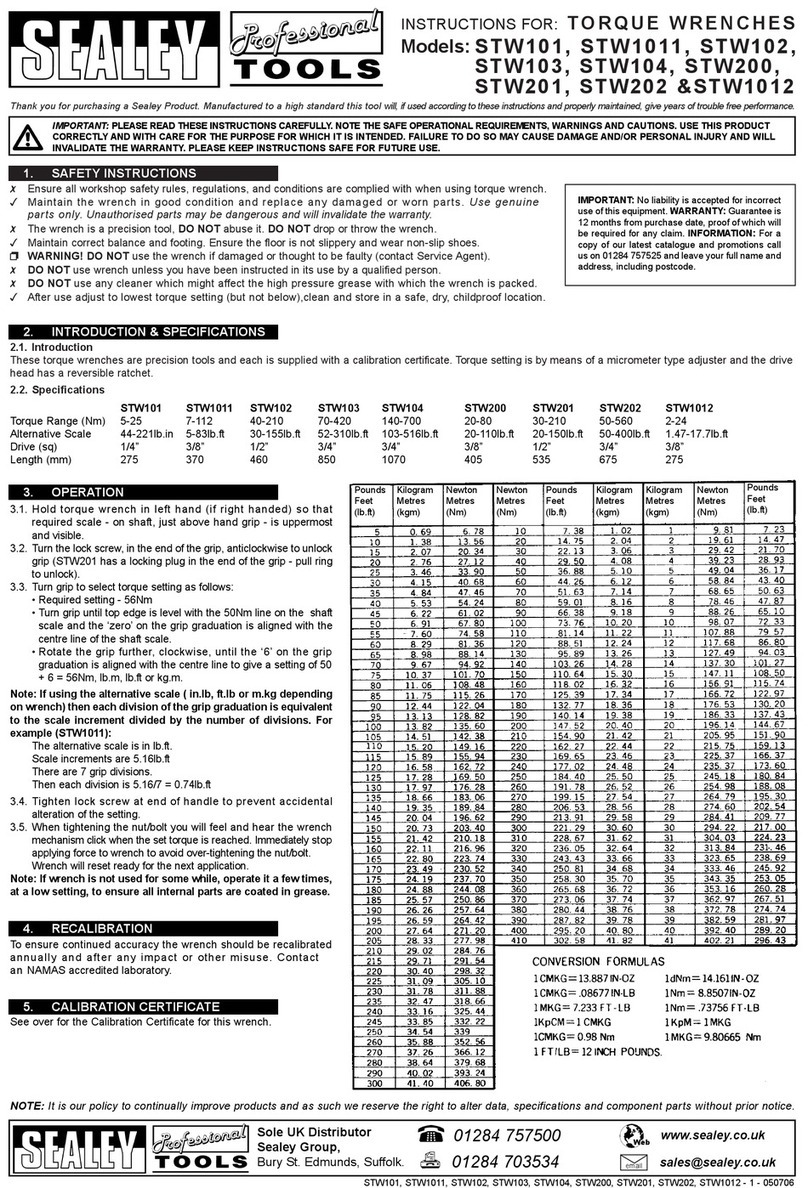
Sealey
Sealey STW101 User manual
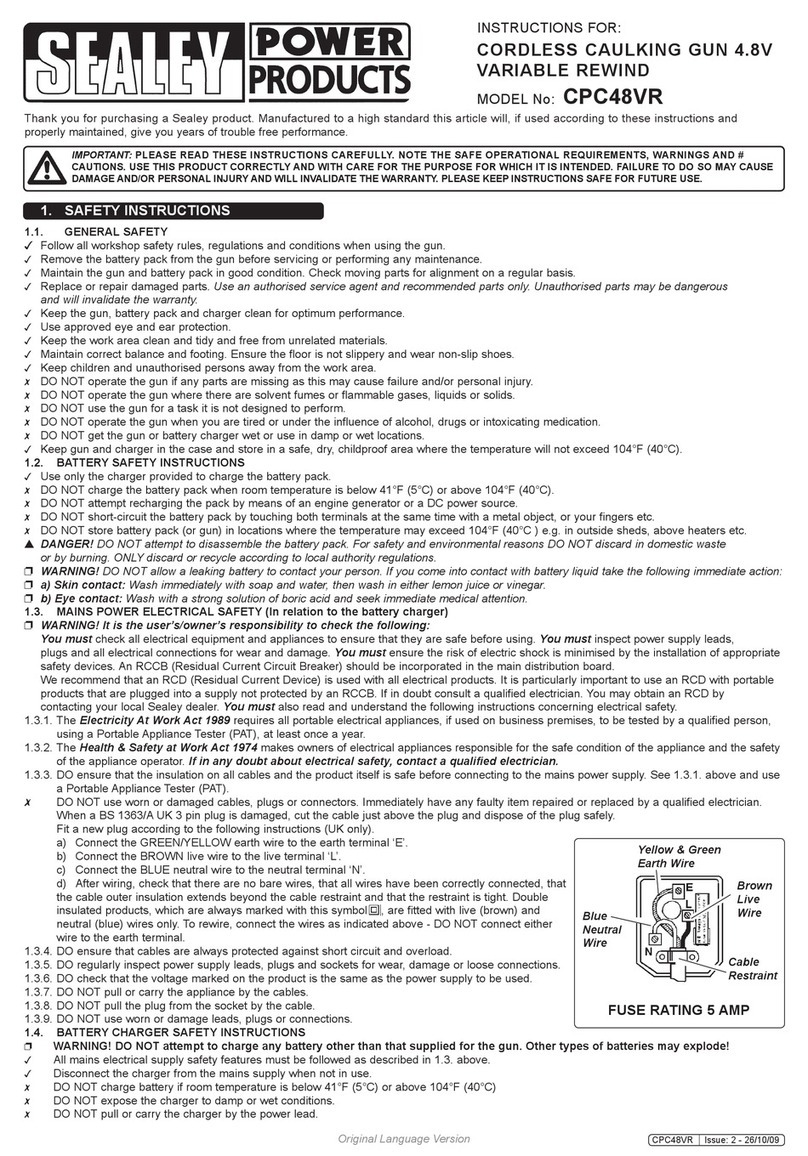
Sealey
Sealey CPC48VR User manual
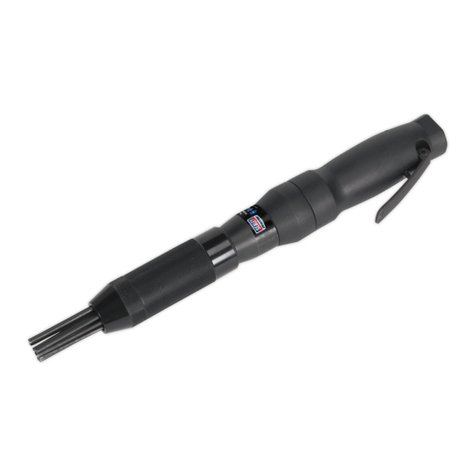
Sealey
Sealey SA661 User manual
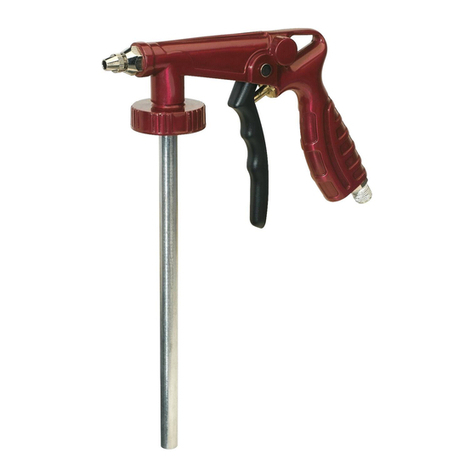
Sealey
Sealey SG14.V3 User manual
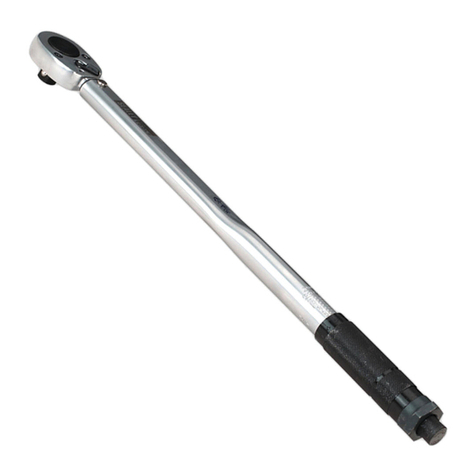
Sealey
Sealey AK624 User manual

Sealey
Sealey SA649 User manual
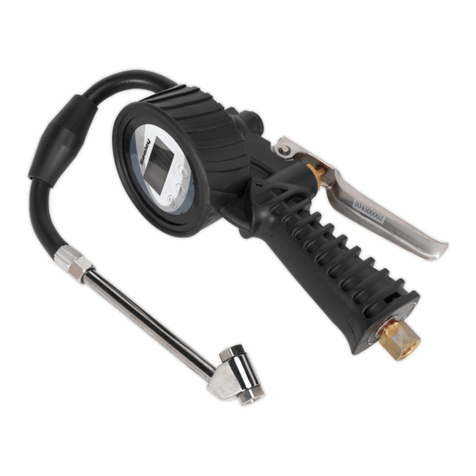
Sealey
Sealey SA393 User manual
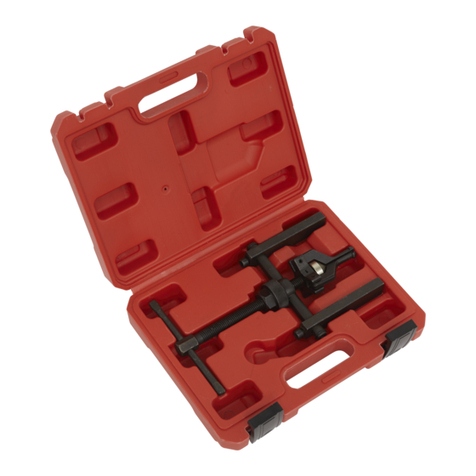
Sealey
Sealey MS0621 User manual
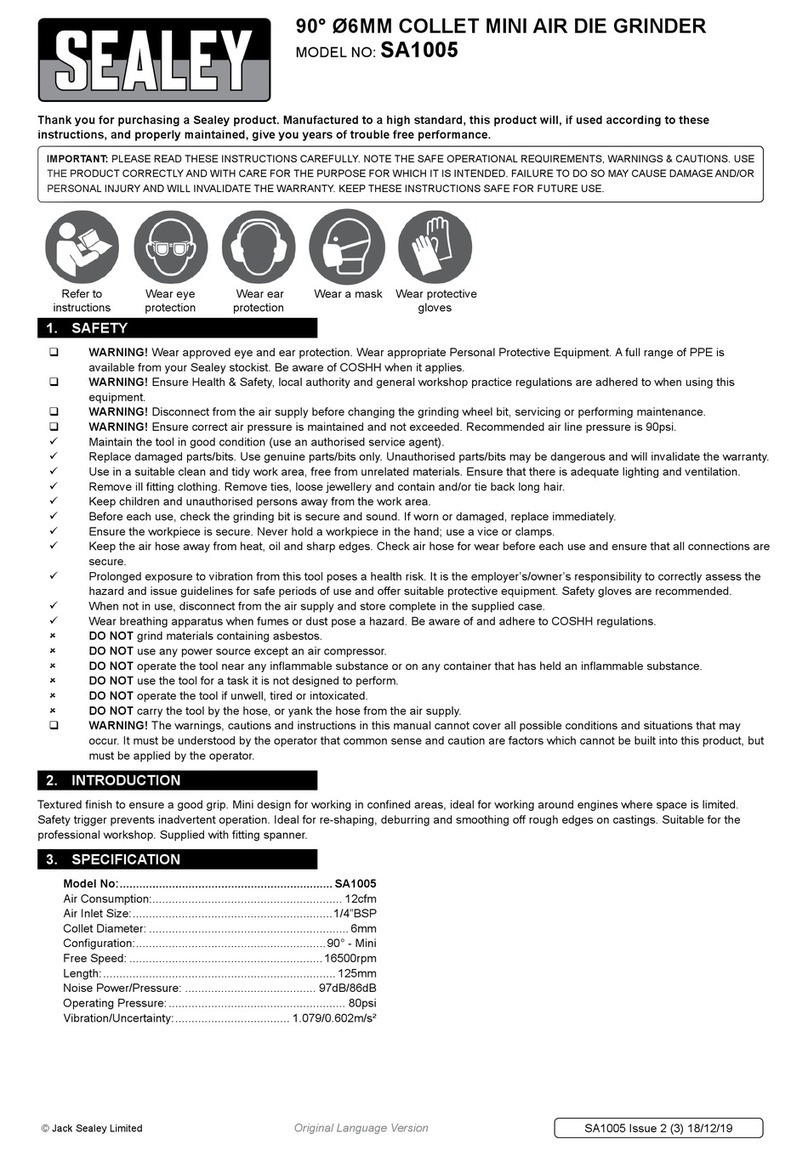
Sealey
Sealey SA1005 User manual
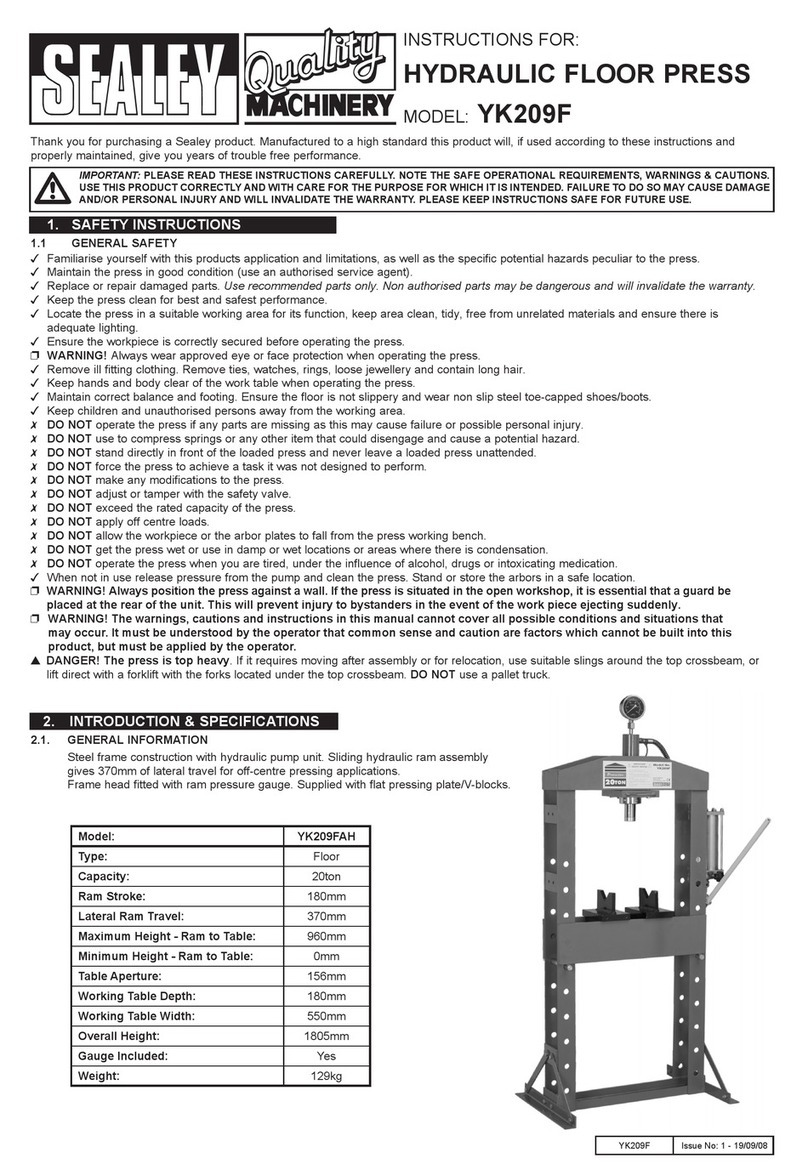
Sealey
Sealey YK209F Configuration guide
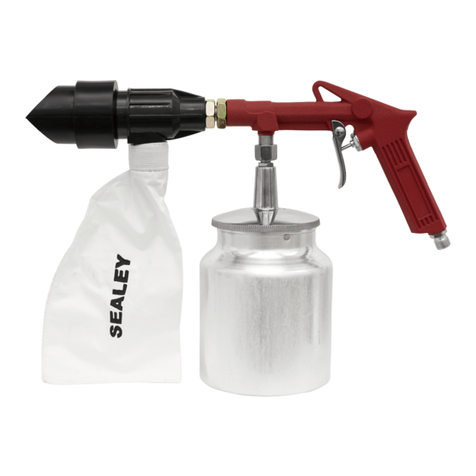
Sealey
Sealey SG10E User manual
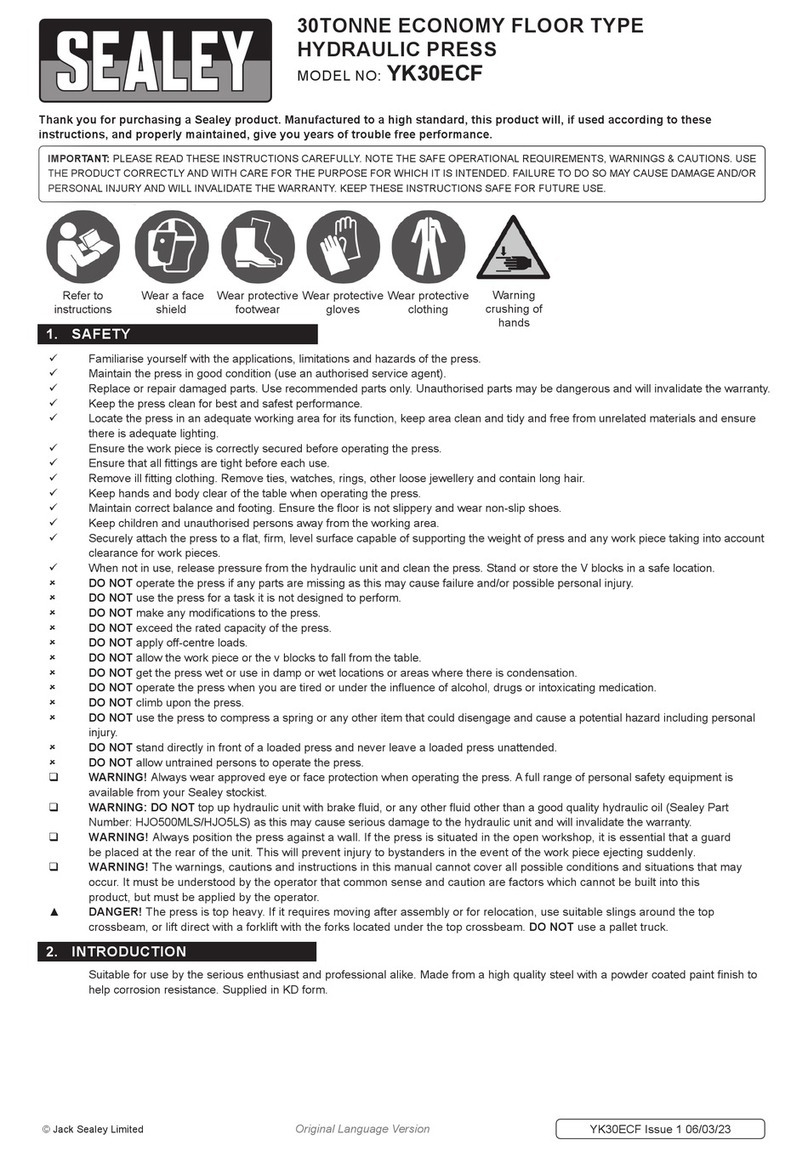
Sealey
Sealey YK30ECF User manual
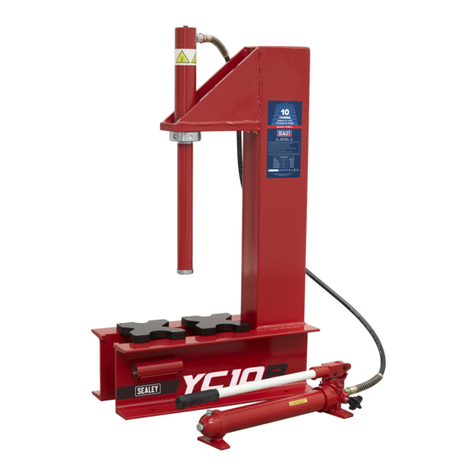
Sealey
Sealey YC10B.V3 User manual
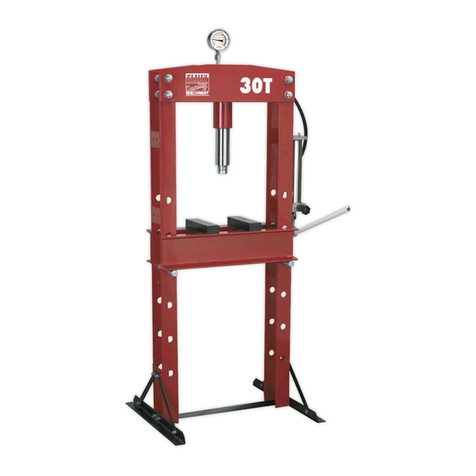
Sealey
Sealey YK30F User manual
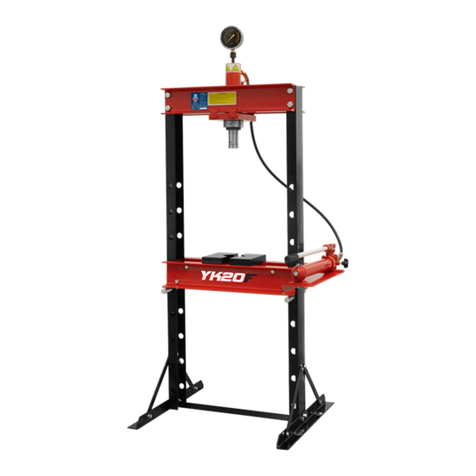
Sealey
Sealey YK20F.V4 User manual
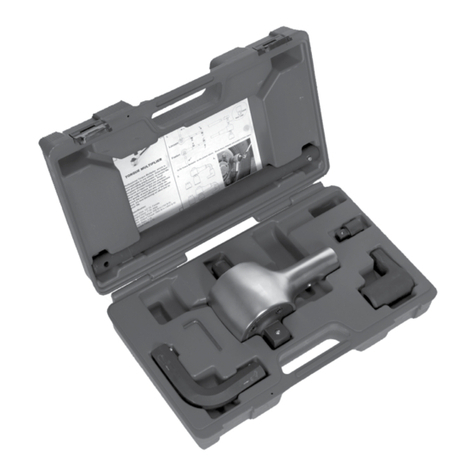
Sealey
Sealey AK6291 User manual
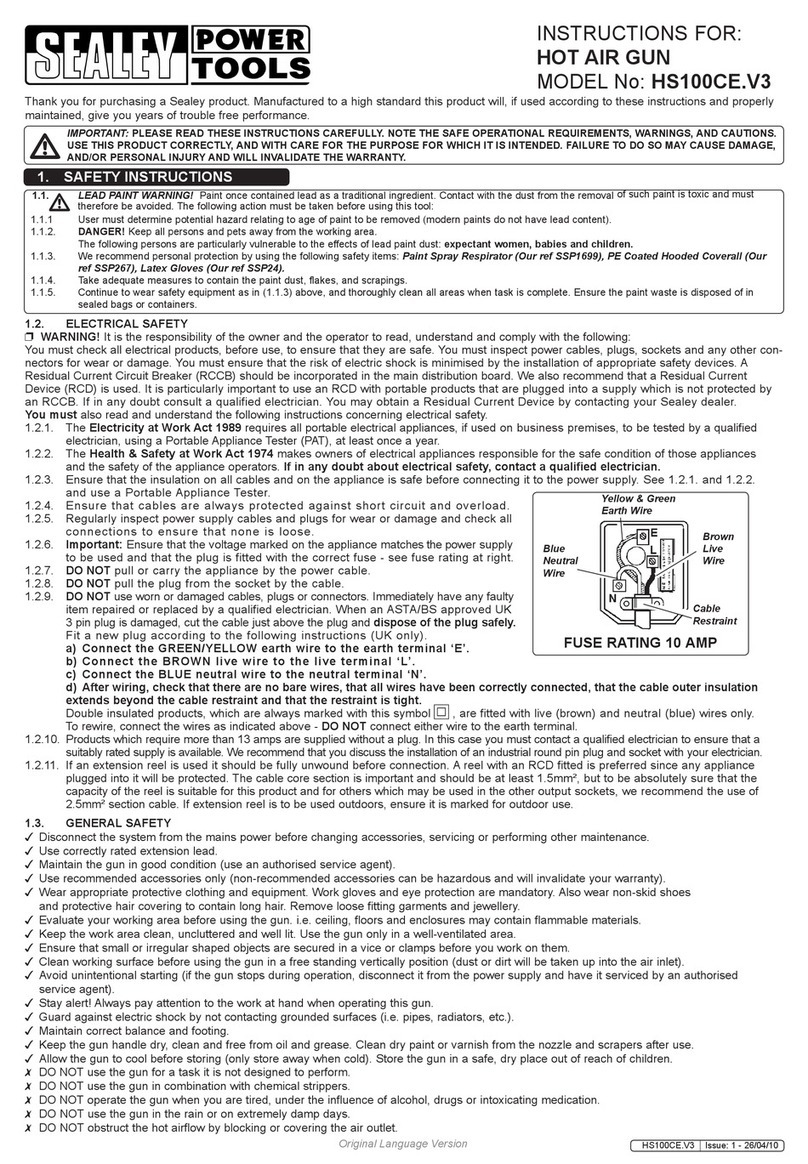
Sealey
Sealey HS100CE.V3 User manual
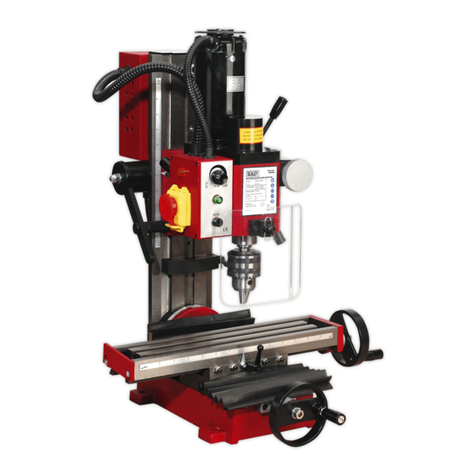
Sealey
Sealey SM2502 User manual
